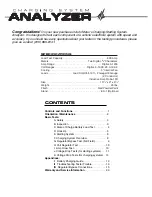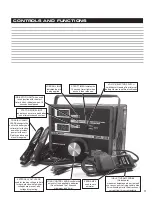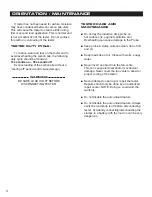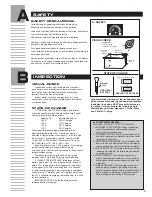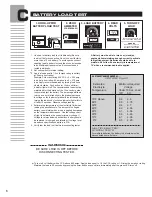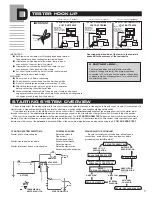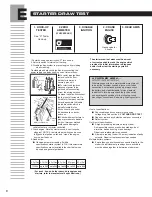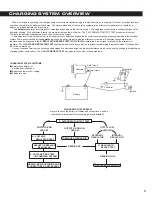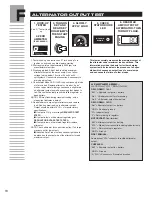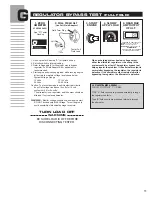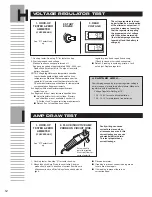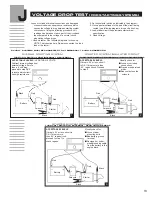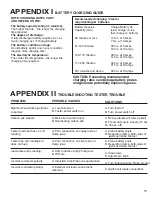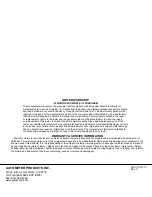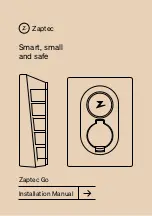
11
REGULATOR BYPASS TEST
(FULL FIELD)
G
When a charging system has low voltage output
either the alternator, regulator or the wiring in the
system could be at fault. The regulator bypass test
helps pinpoint the problem. If the alternator output is
normal after bypassing the regulator, the regulator is
defective. If the alternator output remains low after
bypassing the regulator, the alternator is defective.
A FURThER LOOk...
FIELD CIRCUIT TYPES:
TyPE “A” field circuits are grounded externally through
the regulator contacts.
Type “B” field circuits are grounded internally through
the alternator.
1. Hook-up tester. See step “D” for tester hook-up.
2. Set volts switch to internal setting.
3. Refer to Appendix IV for the proper way to bypass
regulator. Full Field Adaptor Kit or equivalent is
recommended.
4. Start engine and slowly apply load, while running engine
at fast idle to maintain voltage level shown below.
System Voltage Range
12 Volts
12-15 Volts
24 Volts 24-30 Volts
Caution: To prevent damage to vehicle electrical circuits;
do not let voltage rise above 15 volts for 12 volt
systems or 30 for 24 volts.
The alternator is un-regulated, and full output should be
attained. If not replace alternator.
WARnInG:
Monitor voltage continiously from engine start.
DO NOT exceed safe MAX Voltage. Turn off engine to
avoid possibility of electrical damage to vehicle.
1. ZERO
AMMETER
(IF nECESSARY)
2. FuLL FIELD ALT
(use Full Field Adaptor)
3. START
EnGInE
4. SLOWLY
AppLY LOAD
5. READ MAX
AMp OuTpuT
OF ALT.
See “D” Tester
Hook-up
Volt Reg.
Field Term Plug.
Tester Full
Field Lead
A
M
P
S
COMPARE TO VEHICLE SPECS.
IF LOW:
REPLACE ALTERNATOR
IF Ok:
REPLACE REGULATOR
IF pREVIOuS:
RESULTS WERE LOW
WARNING
BE SURE LOAD IS OFF BEFORE
DISCONNECTING TESTER.
TURN LOAD OFF
WARNING
BE SURE LOAD IS OFF BEFORE
DISCONNECTING TESTER.
OFF
LOAD


